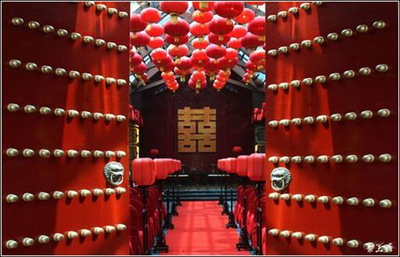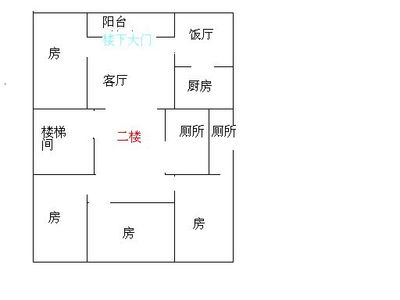十二生肖英文介绍
生俏的英文是 good-looking 你问的是生肖12个英文是 鼠:Rat, 牛:Ox, 虎:Tiger, 兔:Hare 龙:Dragon, 蛇:Snake, 马:Horse 羊:Sheep, 猴:Monkey, 鸡:Cock 狗:Dog, 猪:Boar 这是地支 生肖的说: Rat charm, 子鼠 Ox patient, 丑牛 Tiger sensitive, 寅虎 Rabbit articulate, 卯兔 Dragon healthy, 辰龙 Snake deep, 巳蛇 Horse popular, 午马 Goat elegant, 未羊 Monkey clever, 申猴 Rooster deep thinkers, 酉鸡 Dog loyalty, 戌狗 Pig chivalrous. 亥猪 这是最全的 一. 鼠——Rat 英语中用以比喻讨厌鬼,可耻的人,告密者,密探,破坏罢工的人;美国俚语指新学生、下流女人。当看到smell a rat这一词组时,是指人们怀疑在做错某事。a rat race则表示激烈的竞争 。rats desert a sinking ship(船沉鼠先逃,这一谚语意指那些一遇到危险就争先寻求 安全或一看见困难便躲得老远的人。) 二. 牛——Ox 涉及“牛”的汉语成语很多,如“对牛弹琴”、“牛蹄之涔”等。英语中涉及“Ox”的表 达方式则不多。用Ox - eyed形容眼睛大的人;用短语The black Ox has trod on sb’s foot表示灾祸已降临到某人头上。 三. 虎——Tiger 指凶恶的人,虎狼之徒;英国人指穿制服的马夫;口语中常指比赛的劲敌。中国和东南亚国家常以Paper tiger比喻貌似强大而实质虚弱的敌人。词组ride the tiger表示以非常不 确定或危险的方式生活。 四. 兔——Hare 在英国俚语中,hare指坐车不买票的人。与hare组成的词组有:make a hare of sb.愚弄某人。start a hare。在讨论中提出枝节问题。例如:You start a hare ever time at the meeting.每次讨论你都提出与题无关的问题。英语中有许多关于兔的谚语,如: 1. First catch your hare.勿谋之过早(意指:不要过于乐观)。 2. You cannot run with the hare and hunt with hounde.不能两面讨好(意指:不要耍两面派)。 五. 龙——Dragon 龙在中国人民的心目中占有崇高的位置,有关龙的成语非常多,且含有褒义。如“龙跃凤鸣”、“龙骧虎步”等。在外国语言中,赞扬龙的词语非常之少,且含有贬义。如“dragon”指凶暴的人,严厉的人,凶恶严格的监护人,凶恶的老妇人等。以dragon组成的词组也多含贬义。如dragon’s teeth :相互争斗的根源;排列或多层的楔形反坦克混克混凝土障碍物。the old Dragon:魔鬼。 六. 蛇——Snake 指冷酷阴险的人,虚伪的人,卑鄙的人;美国俚语指追求和欺骗少女的男子或男阿飞。由 此看到,在英语中,“snake”往往含有贬义。如: John’s behavior should him to be a snake. 约翰的行为表明他是一个冷酷阴险的人。 与sna......余下全文>>
十二星座英文介绍
Aries 白羊座(3月21日~4月20日) The fire element of Arise brings assertive “I” energy. 火相星座的特质使白羊座具有非常自信的自我力量。 TIPS: Your persistence will lead you to success. But your impulsive temper may cause problems. 坚持会使你成功,但是爱冲动的毛病也会带来麻烦。 Taurus 金牛座(4月21~5月21日) The Earth element of Taurus brings strength and the desire for solid ground form and structure. 土相星座的特质让金牛座渴望并具有脚踏实地的能力。 TIPS: You might be a little bit slow-witted, but your consistency will make it up. 你也许反应有一点慢,但是你的坚毅会弥补这个缺点。 Gemini 双子座(5月22日~6月21日) The Air element of Gemini brings communication, intellect and speed. 风向星座的特质让双子座具有沟通能力,智慧和速度。 TIPS: Your mutable motivation brings adaptability. 你的多变使你能够适应事物。 Cancer 巨蟹座(6月22日~7月22日) Cancer’s element is Water. Symbolic of the emotions, water signs need to give and receive. 巨蟹座是水相星座。水是情感的象征,水的特质是给予和接受。 TIPS: Good memory is your born gift. 良好的记忆力是你与生俱来的天赋。 Leo 狮子座(7月23日~8月23日) Leo is Fire to the core! Fire brings a desire to create, innovate, and lead. 狮子座是火相星座的中心。火引发了创造,革新和领导的欲望。 TIPS: Your fixed motivation adds self-reliance. But remember to balance self-confidence with humility. 你对目标的坚定不移使你自信。但是记住自信也需要谦虚来平衡。 Virgo 处女座(8月24日~9月23日) Ruled by shape-shifting Mercury, Vi龚go works hard to stability. 在流动的水星控制下,处女座需要努力才能获得稳定。 TIPS: A good educational background is important. Diligence is your advantage. 良好的教育背景很重要。你的优点是勤奋。 Libra 天秤座(9月24日~10月23日) Libra represents the Air element. It is a sign that is more extroverted......余下全文>>
八卦阵介绍
关于中国古代军事阵法是否存在 可以肯定的是,八卦阵等古代阵法是真实存在的。虽然不像文学作品中描述地那么神奇,但却实实在在地反映了先贤们对于战争理论的理解。 一、马军、步军、与“冲阵” “百年来步兵难敌骑兵”。冷兵器时代的战争,胜负往往并不取决的双方伤亡的绝对数量,而是士兵的士气,当一方绝大多数部队陷入恐惧,失去了继续厮杀的勇气,也就宣告了他们的失败。而人是盲目的,所谓勇气,很多时候是依赖于身边是否有站立的战友,我方是否能够保持完整的阵容。只要一个战阵依然完整,哪怕被重重围困,身边的将士也能给士兵以继续作战的激励。 而对于战阵,说是靠在一起,其实不然。可以想象,一旦双方步卒战线平平地对击,面对面的厮杀,过分紧密的队形将导致我方兵器无法有效挥舞,而对手的长戈却有机会作到一击数人。因此,所谓完整的阵容,其实是松散的,这也给了马军以可乘之机。 马上骑兵相对于步卒拥有压倒性的优势,很大程度上是由于其一往无前的气势、强大的冲击力对于战线的破坏性。正统的战法,即所谓“冲阵”,是百骑齐发,在正面从多个点冲破对方战线,直抵阵后,再勒马回身反向冲击。这种反复冲击的作用并不在于杀伤,而是使对方任何两个士兵之间的联系随时有被匹马截断的危险,使单个的步卒产生孤立无援的错觉,在整体上将完整的队形破坏为一盘散沙。加之骑兵冲锋时有如镰刀割麦,极高的速度造成巨大的能量,单独的步兵一旦正面被撞,不会有任何格挡或反击的机会。这种死亡的恐惧在孤独感的作用下会越发显著,从而导致个体失去战意,进而发展为群体的溃败。 二、马军冲阵的技巧 静止的骑兵是弱小的。骑兵攻击步兵的模式,其实充满着虚张声势的成分。由于本身实际的攻击范围并不比步卒大,坐骑的存在又导致受打击面积远大于步卒,因此他们只能利用无休止的跑动和不规则的路线,依靠瞬间的爆发力冲击毫无防备的、落单的步卒。一旦有举枪提盾、互相依靠、严阵以待的步兵集结扎堆,骑方往往会轻巧地绕开。这些扎堆的“刺猬兵”虽然难杀,却也无法对有意识避开他们的骑兵造成伤害,也就在事实上造成了一方实际战斗人员数量的损失。他们不动,则无用;动,则会产生松动,露出破绽。 骑方通过来回地冲杀,制造混乱和恐慌,等待那些“刺猬兵”自行散开,再逐一收割。因此,骑兵的冲击路线虽然没有规律,但实际上往往会选择眼前人比较少,队伍较薄弱的方向前进。 三、八卦阵 让我们总结一下。骑方的手段,是在敌阵前后两端之间来回冲击;目的,是造成恐慌和混乱。步方的劣势,是无法兼顾安全性与机动性,无法与骑方堂堂正正地对决。 所谓八卦阵,实际上是一种经过事先针对性训练的,步卒应对马军的手段。在对方冲击时,有意识地在战线的某些位置让出真空,引诱骑方下意识地集中向这些路线行进。待其杀入阵中之后,我阵虽破却不散,一路上在两边集结固守,让出前方空间任由敌人冲刺。 阵势的核心在于:这种路径可以通过事先操演确定,通过有意识地引导,让对方本来是战阵两端的直线冲杀,变成我方主导下的,在阵内的环型路线!连续不断地接触,无穷无尽的敌人,将会逐步消耗马军的气势和体力。而由于马军自身的特性,他们又不得不按照这条“安全”的路线冲锋。所谓“强弩之末不能穿鲁缟”,随着时间的推移,阵内的敌军最终会被逐渐消耗一空。 八卦一说,则是好事者给简单的军事队列,披上了一层玄妙的外衣。
八卦阵介绍
关于中国古代军事阵法是否存在 可以肯定的是,八卦阵等古代阵法是真实存在的。虽然不像文学作品中描述地那么神奇,但却实实在在地反映了先贤们对于战争理论的理解。 一、马军、步军、与“冲阵” “百年来步兵难敌骑兵”。冷兵器时代的战争,胜负往往并不取决的双方伤亡的绝对数量,而是士兵的士气,当一方绝大多数部队陷入恐惧,失去了继续厮杀的勇气,也就宣告了他们的失败。而人是盲目的,所谓勇气,很多时候是依赖于身边是否有站立的战友,我方是否能够保持完整的阵容。只要一个战阵依然完整,哪怕被重重围困,身边的将士也能给士兵以继续作战的激励。 而对于战阵,说是靠在一起,其实不然。可以想象,一旦双方步卒战线平平地对击,面对面的厮杀,过分紧密的队形将导致我方兵器无法有效挥舞,而对手的长戈却有机会作到一击数人。因此,所谓完整的阵容,其实是松散的,这也给了马军以可乘之机。 马上骑兵相对于步卒拥有压倒性的优势,很大程度上是由于其一往无前的气势、强大的冲击力对于战线的破坏性。正统的战法,即所谓“冲阵”,是百骑齐发,在正面从多个点冲破对方战线,直抵阵后,再勒马回身反向冲击。这种反复冲击的作用并不在于杀伤,而是使对方任何两个士兵之间的联系随时有被匹马截断的危险,使单个的步卒产生孤立无援的错觉,在整体上将完整的队形破坏为一盘散沙。加之骑兵冲锋时有如镰刀割麦,极高的速度造成巨大的能量,单独的步兵一旦正面被撞,不会有任何格挡或反击的机会。这种死亡的恐惧在孤独感的作用下会越发显著,从而导致个体失去战意,进而发展为群体的溃败。 二、马军冲阵的技巧 静止的骑兵是弱小的。骑兵攻击步兵的模式,其实充满着虚张声势的成分。由于本身实际的攻击范围并不比步卒大,坐骑的存在又导致受打击面积远大于步卒,因此他们只能利用无休止的跑动和不规则的路线,依靠瞬间的爆发力冲击毫无防备的、落单的步卒。一旦有举枪提盾、互相依靠、严阵以待的步兵集结扎堆,骑方往往会轻巧地绕开。这些扎堆的“刺猬兵”虽然难杀,却也无法对有意识避开他们的骑兵造成伤害,也就在事实上造成了一方实际战斗人员数量的损失。他们不动,则无用;动,则会产生松动,露出破绽。 骑方通过来回地冲杀,制造混乱和恐慌,等待那些“刺猬兵”自行散开,再逐一收割。因此,骑兵的冲击路线虽然没有规律,但实际上往往会选择眼前人比较少,队伍较薄弱的方向前进。 三、八卦阵 让我们总结一下。骑方的手段,是在敌阵前后两端之间来回冲击;目的,是造成恐慌和混乱。步方的劣势,是无法兼顾安全性与机动性,无法与骑方堂堂正正地对决。 所谓八卦阵,实际上是一种经过事先针对性训练的,步卒应对马军的手段。在对方冲击时,有意识地在战线的某些位置让出真空,引诱骑方下意识地集中向这些路线行进。待其杀入阵中之后,我阵虽破却不散,一路上在两边集结固守,让出前方空间任由敌人冲刺。 阵势的核心在于:这种路径可以通过事先操演确定,通过有意识地引导,让对方本来是战阵两端的直线冲杀,变成我方主导下的,在阵内的环型路线!连续不断地接触,无穷无尽的敌人,将会逐步消耗马军的气势和体力。而由于马军自身的特性,他们又不得不按照这条“安全”的路线冲锋。所谓“强弩之末不能穿鲁缟”,随着时间的推移,阵内的敌军最终会被逐渐消耗一空。 八卦一说,则是好事者给简单的军事队列,披上了一层玄妙的外衣。
跪求介绍中国结和年年有余(鱼)的英文文章
Chinese knots中国结 Chinese Knots Traditional Chinese decorative knots, also known as Chinese knots, are typical local arts of China. They are a distinctive and traditional Chinese folk handicraft woven separately from one piece of thread and named according to its shape and meaning. In Chinese, "knot" means reunion, friendliness, peace, warmth, marriage, love, etc. Chinese knots are often used to express good wishes, including happiness, prosperity, love and the absence of evil. Chinese people have known how to tie knots using cords ever since they began learned how to attach animal pelts to their bodies to keep warm thousands of years ago. As civilization advanced, Chinese people used knots for more than just fastening and wrapping. Knots were also used to record events, while others had a purely ornamental function. In 1980, dedicated connoisseurs collected and arranged decorative yet practical knots passed down over centuries in China. After studying the structures of these knots, the devotees set about creating new variations and increasing the decorative value of knots. The exquisitely symmetrical knots that come in so many forms are as profound as the great cultural heritage of the Chinese people. The Chinese knot is based on over a dozen basic knots named according to their distinctive shapes, usages, or origins. The Two-Coins Knot, for example, is shaped like two overlapping coins once used in ancient China. The Button Knot functions as a button, and the Reversed Swastika Knot was derived from the Buddhist symbol commonly seen on the streamers hanging down from the waistband of the Buddhist Goddess of Mercy. The knots are pulled tightly together and are sturdy enough to be used for binding or wrapping, making them very practical. Furthermore, the complicated structure of the Chinese knot allows all kinds of variations and enhances its decorative value. Almost all basic Chinese knots are symmetrical, which has set certain technical limitations on the design and creation of new patterns and themes. Symmetry is consistent with time-honored ornamental and aesthetic standards in China. Visually, the symmetrical designs are more easily accepted and appreciated by Chinese people. Except for the Two-Coins Knot, the Chinese knot is three dimensional in structure. It comprises two planes tied together leaving a hollow center. Such a structure lends rigidity to the work as a whole and keeps its shape when hung on the wall. The hollow center also allows for the addition of precious stones. Crafting the Chinese knot is a three-step process which involves tying knots, tightening them and adding the finishing touches. Knot-tying methods are fixed, but the tightening can determine the degree of tension in a knot, the length of loops (ears) and the smoothness and orderliness of the lines. Thus, how well a Chinese knot has been tightened can demonstrate the skill and artistic merit of a knot artist. Finishing a knot means inlaying pearls or other precious stones, starching the knot into certain patterns, or adding any other final touches. Since ancient times, the Chinese knot has adorned both the fixtures of palace halls and the daily implements of countryside households. The Chinese Macrame has also appeared in paintings, sculptures and other pieces of folk art. For instance, the Chinese Macrame was used to decorate chairs used by the emperor and empress, corners of sedans, edges of parasols, streamers attached to the waistbands of lady's dresses, as well as all manners of seals, mirrors, pouches, sachets, eyeglass cases, fans and Buddhist rosaries. The endless variations and elegant patterns of the Chinese knot, as well as the multitude of different materials that can be used (cotton, flax, silk, nylon, leather and precious metals, such as gold and silver, to name a few) have expanded the functions and widened the applications of the Chinese knot. Jewelry, clothes, gift-wrapping and furniture can be accentuated with unique Chinese knot creations. Large Chinese knot wall hangings have the same decorative value as fine paintings or photographs, and are perfectly suitable for decorating a parlor or study. The Chinese knot, with its classic elegance and ever-changing variations, is both practical and ornamental, fully reflecting the grace and depth of Chinese culture. 中国结 "中国结"全称为"中国传统装饰结"。它是一种中华民族特有的手工编织工艺品,具有悠久的历史。"中国结"的起源可以追溯到上古时期,当时的绳结不仅是人们日常生活中的必备用具,同时还具有记载历史的重要功用,因而在人们的心目中是十分神圣的。很早以前人们就开始使用绳纹来装饰器物,为绳结注入了美学内涵。除了用于器物的装饰,绳结还被应用在人们的衣着、佩饰上,因此绳结也是中国古典服饰的重要组成部分。 唐宋时期(公元7~13世纪)是中国文化、艺术发展的重要时期。这一时期中国结被大量地运用于服饰和器物装饰中,呈明显的兴起之势。至明清时期(公元1368~1911年),"中国结"工艺的发展达到鼎盛阶段,在诸多日常生活用品上都能见到美丽的花结装饰。其样式繁多,配色考究,名称巧妙,令人目不暇接,由衷赞叹。 "中国结"的编制过程十分复杂费时。每个基本结均以一根绳从头至尾编制而成,并按照结的形状为其命名。最后再将不同的基本结加以组合,间配以饰物,便成为富含文化底蕴,表示美好祝福,形式精美华丽的工艺品。 悠久的历史和漫长的文化沉淀使"中国结"蕴涵了中华民族特有的文化精髓。它不仅是美的形式和巧的结构的展示,更是一种自然灵性与人文精神的表露。因此,对传统"中国结"工艺的继承和发展是极有意义的。 年年有余:[
有关十二生肖兽首的英文介绍
一. 鼠--Rat 英语中用以比喻讨厌鬼,可耻的人,告密者,密探,破坏罢工的人;美国俚语指新学生、下流女人。当看到smell a rat这一词组时,是指人们怀疑在做错某事。a rat race则表示激烈的竞争 。rats desert a sinking ship(船沉鼠先逃,这一谚语意指那些一遇到危险就争先寻求 安全或一看见困难便躲得老远的人。) 二. 牛--Ox 涉及“牛”的汉语成语很多,如“对牛弹琴”、“牛蹄之涔”等。英语中涉及“Ox”的表 达方式则不多。用Ox - eyed形容眼睛大的人;用短语The black Ox has trod on sb’s foot表示灾祸已降临到某人头上。 三. 虎--Tiger 指凶恶的人,虎狼之徒;英国人指穿制服的马夫;口语中常指比赛的劲敌。中国和东南亚国家常以Paper tiger比喻貌似强大而实质虚弱的敌人。词组ride the tiger表示以非常不 确定或危险的方式生活。 四. 兔--Hare 在英国俚语中,hare指坐车不买票的人。与hare组成的词组有:make a hare of sb.愚弄某人。start a hare。在讨论中提出枝节问题。例如:You start a hare ever time at the meeting.每次讨论你都提出与题无关的问题。英语中有许多关于兔的谚语,如: 1. First catch your hare.勿谋之过早(意指:不要过于乐观)。 2. You cannot run with the hare and hunt with hounde.不能两面讨好(意指:不要耍两面派)。 五. 龙--Dragon 龙在中国人民的心目中占有崇高的位置,有关龙的成语非常多,且含有褒义。如“龙跃凤鸣”、“龙骧虎步”等。在外国语言中,赞扬龙的词语非常之少,且含有贬义。如“dragon”指凶暴的人,严厉的人,凶恶严格的监护人,凶恶的老妇人等。以dragon组成的词组也多含贬义。如dragon’s teeth :相互争斗的根源;排列或多层的楔形反坦克混克混凝土障碍物。the old Dragon:魔鬼。 六. 蛇--Snake 指冷酷阴险的人,虚伪的人,卑鄙的人;美国俚语指追求和欺骗少女的男子或男阿飞。由 此看到,在英语中,“snake”往往含有贬义。如: John’s behavior should him to be a snake. 约翰的行为表明他是一个冷酷阴险的人。 与snake组成的成语习语、谚语有许多,简举几例: a snake in the grass.潜伏的敌人或危险。 to warm a snake in one’s bosom.养虎贻患,姑息坏人。Takd heed of the snake in the grass.草里防蛇。 七. 马--Horse 英美国家的人很喜欢马,因此,用“horse”这个词组成的词组、成语、谚语非常之多,此举几例: 1. get on the high horse.摆架子,目空一切。 2. work like a horse.辛苦的干活。 3. horse doctor.兽医、庸医。 4. dark horse.竞争中出人意料的获胜者。 如:The voters were surprised when the dark horse won the nomination.那个无名小卒在竞争中获胜时,投票者无不大吃一惊。 八. 羊--Sheep 英语中指害羞而......余下全文>>
用英文来介绍中国的国庆节。
中国人民解放军解放全中国是1949年1O月1日,开国典礼就是此曰,数十万军民隆重举行了国庆典礼@
需要一篇英文的双鱼座详细介绍
有一天,众神见天气晴好,乃在河畔设宴。爱好音乐的众神们快乐的唱歌和弹奏乐器,气氛相当热烈。突然传来凌厉的叫声,这是肩膀下长出一百尾蛇、拥有大羽翼的怪物杰凡。众神一看不妙,四处逃走。宙斯化为鸟,阿波罗化为乌鸦,赫拉化为牧牛,裘林梭斯化为山羊,众神皆以动物之姿逃离。爱和美之女神阿佛罗裘特与其子----恋爱之神耶罗斯化身为鱼,遁入幼发拉底河中。那时彼此决定用绸带将两人尾巴绑在一起,永不分开,就这样顺利从怪物手中逃脱。母子俩就这样以尾巴相连、永不分离的姿势升天,这就是双鱼座的由来。 One day, the weather sunny, but the river to. Love music of the gods happy singing and playing musical instruments, the atmosphere was very warm. A sudden sharp cry, this is the long tail of a serpent, shoulder one hundred, with large wings, where the monster. The gods looks bad, flee. Zeus turned into birds, Appollo to crow, Hera to cattle, Qiu Linsuo as the goat, the posture of animal escape. Goddess of love and beauty, Luo Qiu and his sons -- Buddha God of love Hierro incarnation for fish, into the euphrates. Then each other decide to use ribbon two people tail tied together, never separated, thus successfully escaped from the monster. "Mother 锭nd son on the way to the tail is connected, never separated positions ascended to heaven, this is the origin of pisces.
用英文介绍天平座的性格特点
Libra is the only inanimate sign of the zodiac, all the others representing either humans or animals. Many modern astrologers regard it as the most desirable of zodiacal types because it represents the zenith of the year, the high point of the seasons, when the harvest of all the hard work of the spring is reaped. There is a mellowness and sense of relaxation in the air as mankind enjoys the last of the summer sun and the fruits of his toil. Librans too are among the most civilized of the twelve zodiacal characters and are often good looking. They have elegance, charm and good taste, are naturally kind, very gentle, and lovers of beauty, harmony (both in music and social living) and the pleasures that these bring.
天秤座的介绍
天秤座(Libra),9月23日——10月23日,黄道十三星座第七,位于室女座的东南方向,也属于黄道星座。星座中最亮的四颗3m星α、β、γ、σ组成了一个四边形,其中的β星又和春季大三角构成了一个大的菱形,就可以找到这个星座了。纬度变化位于+65°和−90°之间可全见。天秤座,正名应为天平座,其图是天平(一种衡器)取其公平公正之意,故为天平座。国家对星座命名时使用了天秤座这个词,但同时使用了天平这个词的含义,因此造成了很多混读现象,下面正文中有详细介绍。



